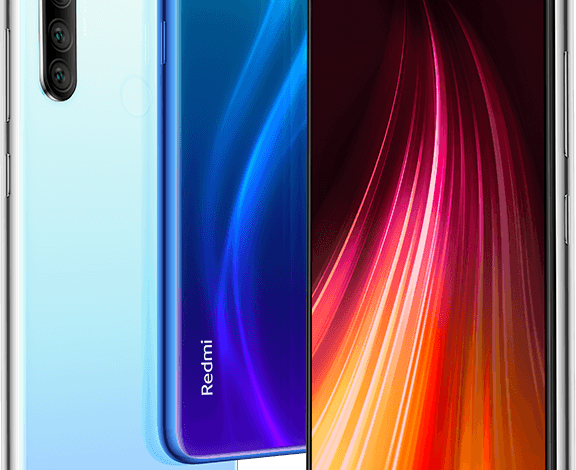Redmi Note 8 Price in Bangladesh: Full Specifications and Market Comparison

The Redmi Note 8 was a significant release for Xiaomi, continuing its tradition of offering high-quality smartphones at affordable prices. Launched on 16 Oct 2019 as part of Xiaomi’s Redmi series In the Bangladeshi Tech market, the Redmi Note 8 quickly gained popularity due to its features and affordability.
It offered premium specifications typically found in higher-priced smartphones at a fraction of the cost. The device became a top choice for many users looking for a reliable and feature-packed smartphone without thinking much about their pocket.
Design and Display Quality
| Type | IPS LCD |
| Size | 6.3 inches, 97.4 cm2 (~81.7% screen-to-body ratio) |
| Resolution | 1080 x 2340 pixels, 19.5:9 ratio (~409 ppi density) |
Display
The Redmi Note 8 features a 6.3-inch IPS LCD. IPS LCD technology offers vibrant colours, wide viewing angles, and good outdoor visibility, making it ideal for everyday use. This display provides sharp visuals and immersive viewing experiences, enhancing the overall appeal of the device.
Four Hundred and Fifty nits (Peak): Four hundred and fifty nits is the brightness level the screen can achieve in this mode, making it easier to see in bright sunlight.
Size
6.3 inches: This is the screen’s diagonal measurement, giving an idea of its size. It’s a large display, providing ample screen space for viewing content.
97.4 cm²: This is the total surface area of the screen, which helps understand how much of the phone’s front is occupied by the display.
81.7% screen-to-body ratio: This percentage indicates how much of the front of the phone is taken up by the screen. An 81.7% ratio means the phone has thin bezels and a large display area compared to the overall size of the phone.
Resolution
1080 x 2340 pixels: This is the resolution of the display. This means that the screen has 1080 pixels across the width and 2340 pixels across the height. This high resolution ensures sharp and clear images.
19.5:9 ratio: This describes the aspect ratio of the screen. A 19.5:9 ratio means the screen is tall and narrow, suitable for viewing videos and immersive content.
409 ppi density: PPI stands for pixels per inch. This density indicates how many pixels are present per inch of the screen. A density of 409 ppi means the screen is very sharp, with individual pixels not easily visible to the naked eye.
Corning Gorilla Glass 5: Redmi Note 8 does feature Gorilla Glass 5 protection on the front and back of some variants, depending on the region and model.
Camera Capabilities of Redmi Note 8
| Quad | 48 MP, f/1.8, 26mm (wide), 1/2.0″, 0.8µm, PDAF 8 MP, f/2.2, 120˚ (ultrawide), 1/4.0″, 1.12µm 2 MP, f/2.4, (macro) 2 MP, f/2.4, (depth) |
| Features | LED flash, HDR, panorama |
| Video | 4K@30fps, 1080p@30/60/120fps; gyro-EIS |
| Selfie Camera | 13 MP, f/2.0, (wide), 1/3.1″, 1.12µm |
| Video | 1080p@30fps |
Main Camera
48 MP: refers to the camera’s resolution, indicating it can capture highly detailed images with 48 million pixels.
f/1.8: This is the aperture size. A lower f-number, like 1.8, means the lens can open wider, allowing more light to hit the sensor, which is beneficial in low-light conditions.
(wide): This denotes a wide-angle lens suitable for capturing broader scenes.
1/4.0″: This is the size of the camera sensor. Larger sensors can capture more light, improving image quality.
0.8µm: This refers to the size of each pixel on the sensor. Smaller pixels allow for a higher resolution but may capture less light individually.
PDAF: Phase Detection Auto Focus. This technology helps the camera focus quickly and accurately, improving sharpness, especially in moving subjects.
Other Three Lenses
- 8 MP, f/2.2, 120˚ (ultrawide), 1/4.0″, 1.12µm: The resolution of this ultrawide camera.
- 2 MP, f/2.4 Macro Lens
- 2 MP: The resolution of the depth sensor.
Features
LED flash: Provides additional light for taking photos in low-light conditions.
HDR: High Dynamic Range. This feature enhances the contrast and colour in photos.
Panorama: Allows you to capture wide, sweeping photos by stitching multiple images together.
Video Capabilities
4K@30fps: The camera can record ultra-high-definition video at 30 frames per second, providing high clarity and detail.
1080p@30/60fps: The camera can also record full HD video at 30 and 60 frames per second. Higher frame rates like 60fps offer smoother motion in videos.
Selfie Camera
13 MP, f/2.0, (wide), 1/3.1″, 1.12µm: The front-facing camera’s resolution allow detailed selfies.
f/2.0: The aperture size suits decent light intake in various lighting conditions.
(wide): Indicates a wide-angle lens that fits more people or backgrounds into selfies.
Video Capabilities
The front camera can record full HD video at 30 frames per second, offering good quality for video calls and selfies.
Software and User Interface
| OS | Android 9.0 (Pie), upgradable to Android 11, MIUI 12.5 |
| Chipset | Qualcomm SDM665 Snapdragon 665 (11 nm) |
| CPU | Octa-core (4×2.0 GHz Kryo 260 Gold & 4×1.8 GHz Kryo 260 Silver) |
| GPU | Adreno 610 |
Android 9.0 (Pie), upgradable to Android 11, MIUI 12.5
Redmi Note 8 ran on MIUI 12.5 based on Android 9 Pi. MIUI 12.5, Xiaomi’s custom Android skin, brings several new features and improvements over MIUI 11. Some notable features of MIUI 12.5 are Performance improvement, system animation and Privacy Enchantment.
MIUI 12.5
- Performance Improvements: MIUI 12.5 promises smoother performance, better memory management, and reduced power consumption.
- System Animations: Enhanced system animations for a more fluid user experience.This increases the aesthetic appeal of smartphones.
- Privacy Enhancements: More granular controls over app permissions and enhanced privacy features give users more control over their data.
- Improved System Apps: Updates to pre-installed system apps, including Notes, Weather, and others, with new features and UI enhancements.
- Customizable UI Elements: More options for customizing the UI, including system fonts, icon shapes, and animations.
- Security Enhancements: Improved security features and optimizations to protect user data.
Battery Performance and Charging
| Type | Li-Po 4000 mAh, non-removable |
| Charge | 18W Wired |
- Capacity: The Redmi Note 8 has a non-removable Li-Po battery with a capacity of around 4000 mAh. This capacity provides ample power to support the device’s features throughout the day, depending on individual usage patterns.
- Estimated Lifespan: The lifespan of the battery can vary depending on factors such as usage patterns, charging habits, and environmental conditions
Charging Speed and Fast Charging
- Charging Speed: The Redmi Note 8 supports fast charging technology, typically with an included charger that delivers up to 18W of power. This allows for relatively quick charging times compared to standard chargers.
- Battery Saver Mode: The Redmi Note 8 likely consists of a battery saver mode that can further extend battery life when the device’s charge is running low.
- Adaptive Battery: MIUI may also incorporate adaptive battery technology, which uses machine learning algorithms to analyze usage patterns and prioritize power allocation to the most frequently used apps and services, further enhancing power efficiency.
Redmi Note 8 Price in Bangladesh
| Sr. No. | RAM | ROM | Price |
| 1 | 3GB | 32GB | 17499 BDT |
| 2 | 4GB | 64GB | 18999 BDT |
| 3 | 4GB | 128GB | 20999 BDT |
Redmi Note 8 is a feature-packed series with variants for different user needs. Its upper variant offers 4GB/128 GB priced at 20999 BDT. Meanwhile, it has two low-end variants comprising 3GB/32GB and 4GB/64 GB, priced at 17499 BDT and 18999 BDT, respectively.
Care Tips for Maintaining Your Redmi Note 8
- Invest in a high-quality tempered glass screen protector to shield the display from scratches, cracks.
- Consider using a protective phone case that provides additional cushioning against Falls.
- Avoid exposing your phone to extreme hot and cold temperatures, as it can degrade battery performance.
- Optimize battery health by avoiding frequent deep discharges.
- Handle your Redmi Note 8 with care to prevent physical damage.
- Keep your phone away from liquids and moisture to prevent water damage
- Regularly update your device’s software to ensure it has the latest security patches and bug fixes.
- Keep your phone’s storage space optimized by regularly deleting unnecessary apps, photos, videos, and files.
- Utilize cloud or external storage services to offload large files and free up internal storage space.
- Compressed air gently blows out dust from the phone’s ports and crevices to maintain functionality.
- Avoid running too many apps simultaneously, as it can strain the phone’s resources.
Pros and Cons of Redmi Note 8
Pros
- The Redmi Note 8 provides excellent value for money, offering a range of features typically found in higher-priced smartphones at a more budget-friendly price point.
- The Redmi Note 8 offers versatile photography options for various shooting scenarios.
- Equipped with a large battery, the Redmi Note 8 offers extended battery life, allowing users to go through a full day of moderate to heavy usage without recharging frequently.
- The device boasts a large, vibrant display with sound colour reproduction and ample screen real estate, making it ideal for multimedia consumption, gaming, and productivity tasks.
- Redmi Note 8 delivers smooth performance for everyday tasks, multitasking, and even gaming, handling most apps and games without lag.
Cons
- While the design is aesthetically pleasing, the Redmi Note 8 features a plastic build instead of more premium materials like glass or metal, which may make it feel less premium compared to some competitors.
- NFC (Near Field Communication) is absent in the Redmi Note 8, which means it lacks support for contactless payments.
- While the camera setup is decent overall, the Redmi Note 8’s performance in low-light conditions is below average.
- Like many other budget smartphones, the Redmi Note 8 has pre-installed apps and bloatware that cannot be uninstalled.




